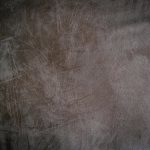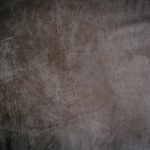If you want to say “corduroy” in Spanish, you’d use “pana,” the most common term for this soft, ribbed fabric. Sometimes you’ll hear “terciopelo de canalé” or “cotelé,” depending on the country. Corduroy clothes like pants (“pantalones de pana”) and jackets (“chaquetas de pana”) are popular and easy to describe with words like “suave” (soft) or “acanelado” (corded). Keep exploring, and you’ll discover more ways to talk about this versatile fabric confidently.
Table of Contents
Key Takeaways
- Corduroy translates to “pana” in Spanish, the most common and widely understood term for this fabric.
- Alternative names include “terciopelo de canalé” and “tela de pana,” highlighting corduroy’s ribbed velvet texture.
- Regional variations exist, such as “cotelé” in Mexico and “pana” in Spain, Argentina, and Chile.
- Descriptions often mention raised ridges as “cordones” or “canales” emphasizing the fabric’s soft, ribbed texture.
- Common clothing items made from corduroy include “pantalones de pana,” “chaquetas de pana,” and “faldas de pana.”
What Is Corduroy?
Corduroy is a durable fabric known for its distinctive raised ridges, called wales, that run parallel along its surface. When you touch corduroy, you’ll feel these soft ribs, which give the fabric a unique texture.
It’s usually made from cotton or a cotton blend, making it comfortable yet sturdy. You’ll often see corduroy used in pants, jackets, and upholstery because it holds up well over time.
The thickness of the wales can vary, affecting the fabric’s appearance and feel—fine wales look smoother, while wide wales feel chunkier.
If you’re curious about its origin, corduroy dates back centuries and has been popular for practical, everyday wear.
Once you get familiar with it, you’ll recognize corduroy by its unmistakable ribbed pattern immediately.
Direct Spanish Translations for Corduroy
When you want to say corduroy in Spanish, you’ll find a few direct translations like “pana.”
Keep in mind that regional differences might change the term, so it’s helpful to know local variations.
This way, you’ll sound natural no matter where you’re in the Spanish-speaking world.
Corduroy Spanish Terms
Finding the right term for corduroy in Spanish can be straightforward once you know the common translations. The most direct word you’ll encounter is “pana,” which is widely used to refer to corduroy fabric.
Another term you might see is “terciopelo de canalé,” which literally means “ribbed velvet” and describes the texture of corduroy more precisely. When shopping or discussing textiles, using “pana” will usually get you understood quickly.
If you want to be more descriptive, “tela de pana” (corduroy fabric) clarifies you’re talking about the material. Remember, these terms focus on the fabric itself, so if you mention “pantalones de pana,” people will know you’re referring to corduroy pants.
Stick to these clear terms, and you’ll communicate effectively about corduroy in Spanish.
Regional Name Variations
Where you’re in the Spanish-speaking world can change how people name corduroy. In Spain, you’ll often hear “pana” to describe this fabric.
However, if you travel to Mexico, “pana” is still common, but some might say “cotelé” instead. In countries like Argentina and Chile, “pana” remains popular, but “pana” can also refer to other soft fabrics, so context matters.
In parts of Central America, you might encounter “terciopelo canalé,” which literally means “corded velvet,” highlighting the fabric’s ribbed texture.
When you’re shopping or describing corduroy, it’s helpful to know these variations to avoid confusion. Understanding regional terms guarantees you communicate clearly and connect better with native speakers wherever you go.
Regional Variations in Spanish-Speaking Countries
When you learn how to say corduroy in Spanish, you’ll notice Spain uses different terms than many Latin American countries.
You’ll also find that some regions mix in words from indigenous languages, adding unique flavors to the vocabulary.
Understanding these variations helps you communicate more naturally wherever you go.
Spain’s Common Terms
In Spain, the word for corduroy often varies depending on the region you’re in. While “pana” is widely understood, locals might use different terms or expressions based on their regional dialects. Knowing these can help you sound more natural and connect better when discussing fabrics.
Here are some common terms you’ll hear across Spain:
- Pana: The most standard term for corduroy fabric.
- Tela de pana: Literally “fabric of corduroy,” often used to specify the material.
- Pana de canalé: Refers to the ribbed texture characteristic of corduroy.
Keep these in mind when shopping or chatting about clothing in Spain, and you’ll navigate local conversations with ease!
Latin American Variations
Although corduroy is a familiar fabric across Latin America, the terms people use to describe it can change dramatically from one country to another.
If you’re in Mexico, you’ll often hear “pana,” a common word for corduroy that also means velvet in some contexts. In Argentina and Uruguay, people say “pana” as well, but it might carry regional nuances.
Meanwhile, in Colombia, “pana” is understood but sometimes “terciopelo de pana” clarifies it’s corduroy specifically.
If you visit Chile or Peru, you might encounter “pana” too, but locals may use additional descriptive words to specify the fabric’s ribbed texture.
Indigenous Language Influences
You’ve probably noticed that local terms for corduroy vary widely across Latin America, reflecting more than just regional slang. Indigenous languages have deeply influenced these variations, shaping the vocabulary you hear today.
When you explore places with strong indigenous heritage, like parts of Mexico, Peru, and Bolivia, you’ll find fabric names that come directly from native tongues or are adapted from them. This influence enriches the Spanish language, giving it unique regional flavors you won’t find elsewhere.
Here are some examples:
- In Quechua-speaking regions, fabric names often incorporate native words describing texture or pattern.
- Nahuatl influences appear in Mexican Spanish terms related to clothing materials.
- Aymara-speaking communities sometimes blend Spanish fabric terms with their native language.
Understanding these influences helps you appreciate the cultural richness behind everyday words.
Describing Corduroy Texture in Spanish
Corduroy’s unique texture stands out with its raised ridges, known as “cordones” or “canales” in Spanish.
When describing corduroy, you can highlight its “suavidad” (softness) combined with the distinct “relieve” (relief) created by these parallel lines. You might say, “La tela tiene un tacto suave con canales elevados,” emphasizing the fabric’s feel and structure.
To express the fabric’s thickness, use “tejido grueso” or “material resistente.” If you want to describe how it looks, mention “las líneas verticales que forman los cordones,” which captures the visual pattern.
Common Clothing Items Made From Corduroy
Corduroy often appears in a variety of clothing items that combine comfort and style.
When you’re looking to add warmth and texture to your wardrobe, corduroy pieces are a great choice. You’ll find this fabric used in both casual and semi-formal wear, making it versatile and trendy.
Here are some common corduroy clothing items you might want to try:
- Pants (pantalones de pana): Durable and cozy, perfect for cooler weather.
- Jackets (chaquetas de pana): Adds texture and warmth to your outerwear.
- Skirts (faldas de pana): Offers a stylish, vintage-inspired look for any season.
How to Ask for Corduroy Fabric in Stores
Wondering how to ask for corduroy fabric in Spanish stores? Start by knowing the key phrase: “¿Tienen tela de pana?” which means “Do you have corduroy fabric?” You can also specify the color or amount you want. Here’s a quick guide with useful phrases and their English meanings:
| Spanish Phrase | English Translation | When to Use |
|---|---|---|
| ¿Tienen tela de pana? | Do you have corduroy fabric? | General inquiry |
| Quisiera medio metro de pana | I’d like half a meter of corduroy | When buying a specific length |
| ¿Qué colores de pana tienen? | What corduroy colors do you have? | When choosing color |
| ¿Cuánto cuesta la pana? | How much is the corduroy? | Asking price |
Use these to confidently find corduroy fabric during your shopping trip!
Useful Adjectives to Describe Corduroy in Spanish
Describing corduroy fabric accurately can help you communicate your preferences clearly when shopping or discussing clothing.
When you talk about corduroy in Spanish, using the right adjectives makes a big difference. Here are three useful adjectives to describe corduroy:
- Suave (soft): Use this when the fabric feels smooth and comfortable.
- Grueso (thick): Perfect to describe corduroy that’s heavy and warm.
- Acanelado (corded): This highlights the distinctive ribbed texture of corduroy.
Corduroy in Spanish Fashion and Culture
The rich texture of corduroy has carved out a unique niche in Spanish fashion, blending comfort with style. You’ll find it in jackets, trousers, and even skirts, embraced for its warmth and durability. Corduroy often appears in traditional and modern designs, making it a versatile fabric in Spain’s cultural wardrobe.
Here’s a quick look at how corduroy fits in Spanish fashion and culture:
| Item | Typical Use | Cultural Significance |
|---|---|---|
| Chaqueta | Casual & formal wear | Popular in cooler months |
| Pantalones | Everyday comfort | Symbol of relaxed style |
| Falda | Trendy, feminine look | Blends tradition & modern |
| Accesorios | Bags & hats | Adds texture & uniqueness |
You’ll appreciate how corduroy balances tradition and trend in Spain.
Tips for Learning Fabric Vocabulary in Spanish
Because fabric vocabulary can be quite specific, you’ll want to focus on practical methods that make these terms stick. Start by associating fabric names with real-life items you see or wear daily. This creates a mental link that helps you remember.
Next, practice using the words in sentences, like describing your clothes or shopping experiences. This builds confidence and contextual understanding. Finally, expose yourself to authentic materials—fashion magazines, labels, or videos in Spanish—to reinforce learning.
- Use flashcards with fabric names and images to boost recall.
- Label your clothing items with Spanish fabric names for constant exposure.
- Join online forums or groups focused on fashion in Spanish to practice vocabulary naturally.
These steps make mastering fabric terms efficient and enjoyable.
Frequently Asked Questions
Is Corduroy Environmentally Friendly Compared to Other Fabrics?
Imagine a forest where trees whisper sustainability. You’ll find corduroy, made from cotton or blends, isn’t always green. It uses lots of water and energy, so compared to organic fabrics, it’s less eco-friendly.
Can Corduroy Be Machine Washed Without Damage?
You can machine wash corduroy, but use cold water and a gentle cycle to avoid damage. Turn the garment inside out to protect the fabric’s texture, and avoid high heat when drying to keep it looking great.
What Are the Origins of Corduroy Fabric?
Imagine weaving history into every ribbed thread; corduroy originated in 18th-century England, crafted for durability. You’ll find its roots in sturdy cloth designed for workers, blending function and comfort through time’s fabric.
How Do You Pronounce “Corduroy” in Spanish?
You’ll pronounce “corduroy” in Spanish as “cor-du-roy,” stressing the first syllable. It sounds similar to English but rolls the “r” slightly. Just say it smoothly, and you’ll nail it in no time!
Are There Any Famous Designers Known for Using Corduroy?
Famous fashion figures frequently favor fine corduroy, from Ralph Lauren’s rustic robes to Marc Jacobs’ modern masterpieces. You’ll find corduroy creating cozy, classic collections that captivate and charm, showcasing style’s soft, sturdy side.
- Does Chiffon Fabric Stink - July 15, 2025
- Does Chiffon Fabric Affect the Economy - July 15, 2025
- Does Cotton Fabric Have a Nap - July 15, 2025





